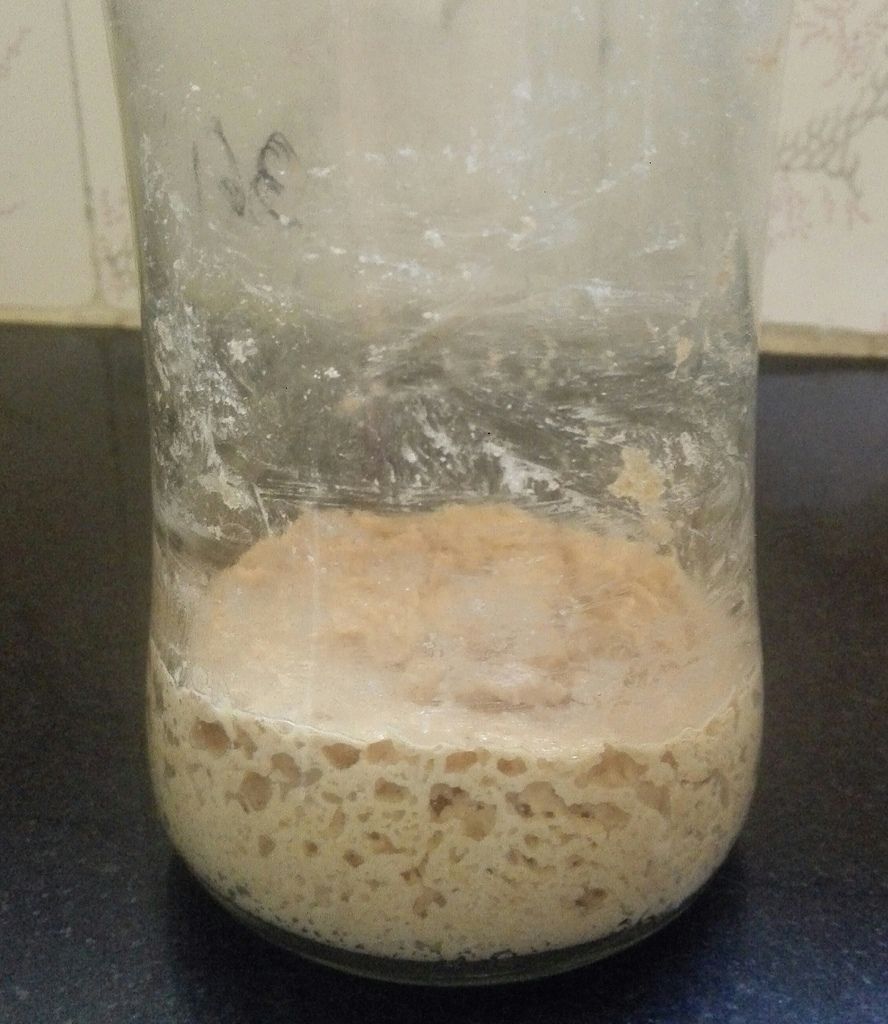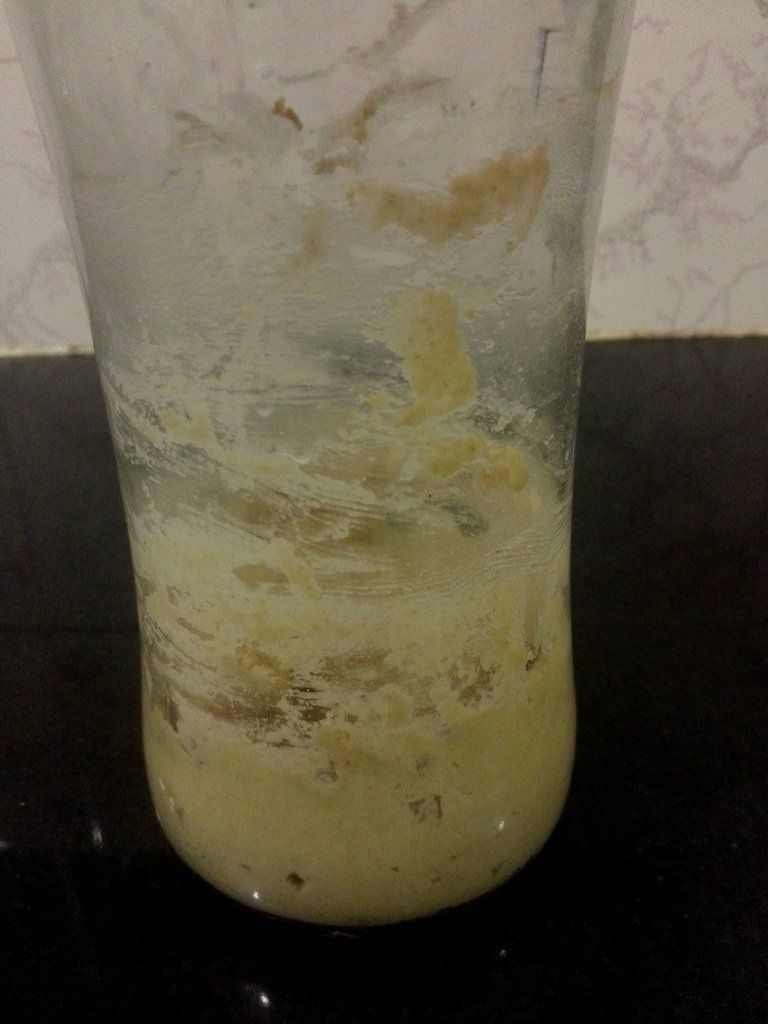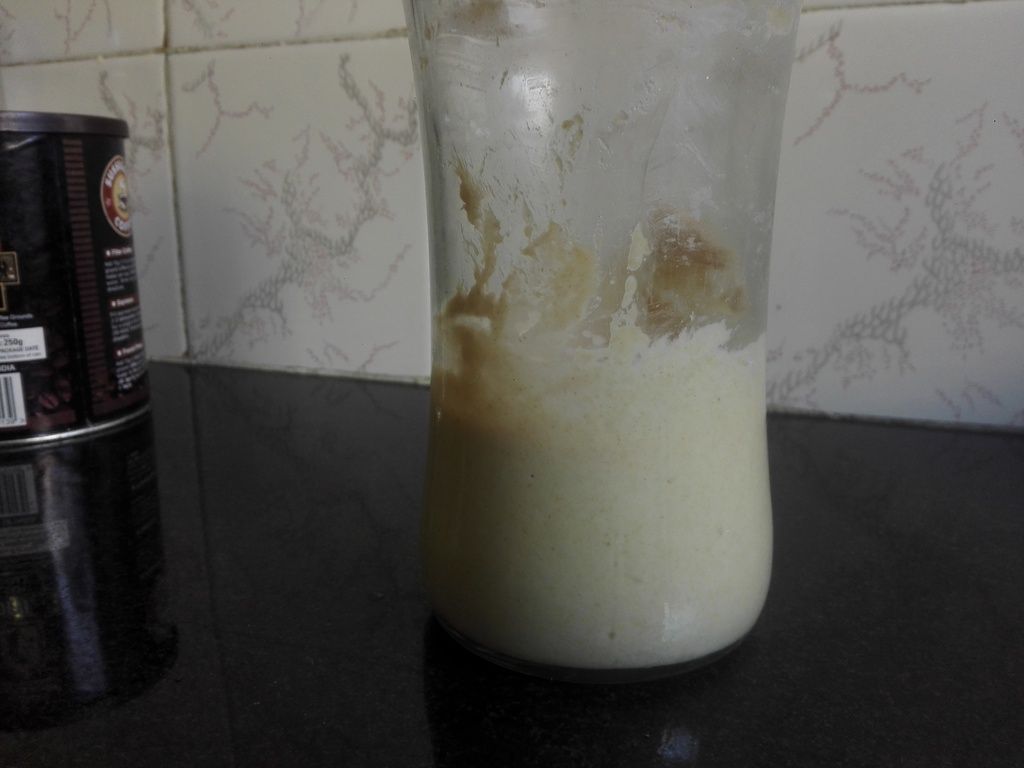Hi fellow bakers,
I am struggling a little bit with few things here and I thought I should consult with you all to overcome the current challenges.
** Starting a sourdough starter in this hot Weather **
I recently had a disaster in the kitchen when my refrigerator stopped working all of sudden releasing gases that has spoiled everything in it including my starter.
Now that i am trying to start a new batch, for some reason I am just not getting it right.
The weather here in Pune, India is hot and its greater than 30°C in my kitchen. (hot roof)
Back in winter, I followed the instructions from the book FWSY successfully but now in summer I could clearly see the effect of these changed conditions.
Right from day 2 the starter smelled extremely sour and used to rise within few hours of feeding.
I then tried to manipulate by adding cold water or more flour or feeding it constantly and in the process (day 4) it nearly stopped rising and just kept smelling very sour.
I kept going, feeding it twice a day with little cold water (25°C) but i saw no progress. The same behavior continued. On my 7th day, i thought lets use it in the recipe and see what it does and it dod the same thing to the bread as there was extremely low rise and crumb was very dense.
I am thinking of starting a new new batch and thats where I need your help. I read many recipes online and here in this forum but couldn't find anything related to these conditions.
Challenges:
1. Hot weather
2. No rye or bread flour, only available options are wheat and very soft ground all purpose flour.
3. I have a Monday to Friday job so can't feed the starter for 9 hours when i am in office.
Is anyone here who is facing similar challenges and how did you overcome it? How can I get good rise and less sour bread? Should I follow a high hydration or low hydration starter?
Other questions:
I have not tasted sourdough before as its not available here.My breads always taste sour and have a sweet after taste. Is this how its suppose to taste?
The crust is very hard to chew, is there any way to make it softer?
Should I store the bread in the refrigerator and in air tight bag, as it gets very hardand dehydrates in 2 days?
I have end number of questions I wish I could just have a long conversation with someone to clear all these doubts. I really enjoy making bread and serving it Indian curries. Its a perfect match :)
Thank you,
Duplicate
1. For your starter, look for the pineapple solution to get a starter going. The acid from the pineapple juice will get things going in the right direction from the start.
2. My bread doesn't taste sour. It might have a bit of a tang on the tongue but no sourness.
3. You can add some fat or milk into your dough to soften it up. You can also brush these on top of your loaf after baking. Placing in a plastic bag after it cools off will also help.
4. Do not, and I repeat do not store you bread in the fridge. This speeds up staling. Store it in a plastic bag instead or slice and freeze if you don't use it fast enough.
do some careful observations. Over 30° is not so bad. Just put the potential starter into the fridge while you are at work and take it out when you get home. Use the evenings to stir and observe the starter. After a few nights start adding a spoon of flour and water after work letting the goop stand out to room temps overnight. Go with unsweetened pineapple juice if you have it but not needed. Use unbleached wheat flour. You will soon have a starter up.
Start combining flour and water (or pineapple juice) in the evening, cover and let stand overnight. In the morning give it a good stir and place into the refrigerator. Do this for several days in a row stirring the starter when you are watching it in the evenings. In your kitchen it should warm up fast after chilling. Chilling gives you the opportunity to slow down the bacteria. I would suggest a thin mixture of flour and water for the first day or two and then thicken up the starter to a paste adding less water with no discarding. After a few nights of thick starter, you should see some bubbling and rise in the paste. Then it would be time to remove half and feed a spoon or two of fresh water and enough flour to get back to a paste. Keep us informed and good luck.
Keep us posted. It looks like Pune and here are similar. Cool nights and hot days. :)
Thank you Mini. You contributions to this community is remarkable.
Excellent suggestion. I can totally try that. I will keep a log and see update you after a week.
Thank you Danielle, I will try the pineapple juice and consider your suggestions while storing the bread.
Yohan Ferrant's "Do Nothing Bread" suits lower protein flour. It's also 1% starter. This combination may suit you very well. Although it is very high hydration you may play around with the recipe. There will be a range but don't go too low as it needs the high hydration for the no knead to work. His formula is...
Flour 100% (60% whole wheat + 40% bread flour)
Water 90%
Salt 2%
Starter 1%
The method is simply mix the dough until hydrated but do not knead. Bulk Ferment for 24 hours with one stretch and fold at the 12+ hour mark. Shape like a Ciabatta into a well floured banneton (at this hydration a cloth lined banneton is better). Final proof for 1 hour and bake in a pre heated oven.
So while he recommends 90% hydration you may lower it if need be just make sure it's of a no knead consistency. My friend did an all bread flour one at 75% hydration and it worked very well. All bread flour can go lower. The more wholegrain the higher the hydration.
At 1% starter you have a lot of time and should be better in the very hot weather. However 24 hours for this recipe is fine in the UK and I imagine in your very hot weather it'll still need adjusting. You can use chilled water and flour plus starter checking the dough at the 16 hour mark to see how it's doing. Watch the dough and not the clock.
http://www.northwestsourdough.com/yohan-ferrants-do-nothing-bread/
Oh b*gger, again I haven't read the question properly. You're talking about making a starter. Not how to go about making bread in the very hot weather. Follow the great advice already given and come back to my suggestion when your starter is done!
Your problem a good one. Try getting a starter made in the cold.
I was so confused reading through your comment. I thought you replied to a wrong post.
I will certainly try out this recipe. :)
is that they don;t keep them warm enough (not your problem), the make them too thin so the gas produced escapes rather than make the starter rise, they don't know the normal process is for the starter to be very active on day 2-3 for all the wrong reasons as the bad LAB and yeast take over but die out as the culture becomes more acidic so the good wee beasties that love higher acidity can take over. Time of going from bad to good can take a day or two so days 4-5 the culture may appear dead. People take this inactivity as a sign of horror. Rather than stopping feeding until they see activity resume like they should, they do the worst thing possible....they continue to feed the culture like it was an active one which makes the culture less acidic so the good wee beasties are actually slowed down and struggle to win their quest to establish a thriving culture wee beasties who like a culture of less acidiity.
Just stop feeding the culture until it shows activity and then thicken it up to 80% hydration after that and all will be well. 80 to 86 F like you have is the perfect temperature for starting SD cultures nd things will happen faster for you as a result.
Happy baking
I never looked at it this way. You seem to make sense as i remember going through similar phases. I was being paranoid about the dough going too sour and took it as an indication that it's consumed all the feeding. I will try this too.
On what scale should I feed or start the starter. FwSY suggests 500g and 400g of water and there is a lot of waste. Should I do it in a smaller scale? Will ot make a difference?
A much much smaller scale! Forkish is insane with the quantity he wastes.
Once I had a disaster as my wet garbage bag could hold the starter waste. :(
No more!!
once a day for 2 days. Then on day 3 discard half and feed again 40/30 on day 4 discard again and feed 80 /60 On day 5 you will have 100 g of fresh starter to make a loaf of bread and 20 g left over to fed 40/30 as your mother starter. Whole grain rye only takes 5 days from start to making bread so things are a wee bit faster. White flour starters are notoriously slow and finicky to get going and why people should avoid them if they can.
I think you meant wheat floor and not white floor. :)
I will start today and update you guys with the progress.
flour.
no need to refrigerate during the day. I see your temps this week will be just about right for leaving the starter standing outside of the refrigerator.
Yes its relatively cooler than last week.
Hi all,
Not aure if these images will be displayed. I am using photobucket html links to upload them.
Anyway, here is the progress.
Day 1: I used 40/40 wheat flour to water with 28 C
I used 40/40 wheat flour to water with 28 C
Day 2 progress. I see nice bubbly dough.
progress. I see nice bubbly dough.
No discard. I added 40/30 wheat flour to water.
Day 3
Rise and fall. Half discard. 40/30 addition.
Day 3 - less activity. no photo. Half discard. 40/30 feeding.
Day 4- Hardly any activity. Smell is sour and the starter looks little dry. HELP. Should I continue feeding it? Bit worried now Will keep you posted.
Bit worried now Will keep you posted.
Day 6
Didn't feed it for 48hrs+
No activity or any bubbles. Smell is acidic.
Kept aerating at regular intervals. I will feed it now 40/30 with half discard and aerate more frequently.
I will feed it now 40/30 with half discard and aerate more frequently.
Wil feed it 80/60 with half discard.
Don't feed again until it doubles. Stir every 6 hours
We don't have Rye in India so I sm using Whole wheat.
I havr now added 80/60 and as you suggested I am going yo wait until I see some activities and keep stirring whenever I get a chance.
Stirring helps too. Looks very typical right now. Good.
It must be getting hot again. Make use of the refrigerator. Tuck it into the refrigerator by day. You can also take a rest and leave it in there for several days.
Then warm it up and check on the progress before discarding and feeding again. (And then save half the goop for back-up in the refrigerator and feed only half.)
I thought I should inform you all but since the last update (day 5) the starter is not showing any activity or. Is not giving out any kind of smell.
Seems like the wild yeast has lost the battle.
I am planning to restart the here with the following approach:
1. 1:1 wheat flour to water feeding ratio depending on the activity.
2. Frequent stirring, at least 4 times a day
3. Filtered water and not the tap chlorinated water.
4. Replace the bottle cap with a cloth, for air circulation.
I am not sure what killed. It the last time or the time before but my starter just gives up after day 4.
I wish there was someone here who lives around that I could have borrowed it and I wish I would've saved my old starter. :(
I hope the new approach helps. Wish me luck.
Thanks for the support.
What day did you give in?
Even if things seems quiet that doesn't mean nothing is happening. Trick is to time your feedings when you see activity. If all is quiet then you just stir. Activity = feed, Quiet = stir.
It can go quiet for 1, 2, 3 or even 4 days. Warmth, stirring and patience.
I'll leave you in Mini's hands. Too much advice is also not a good thing. Let Mini guide you through the whole process. Just wanted to say that "quiet" doesn't always mean bad.
Skype me if you can. :)